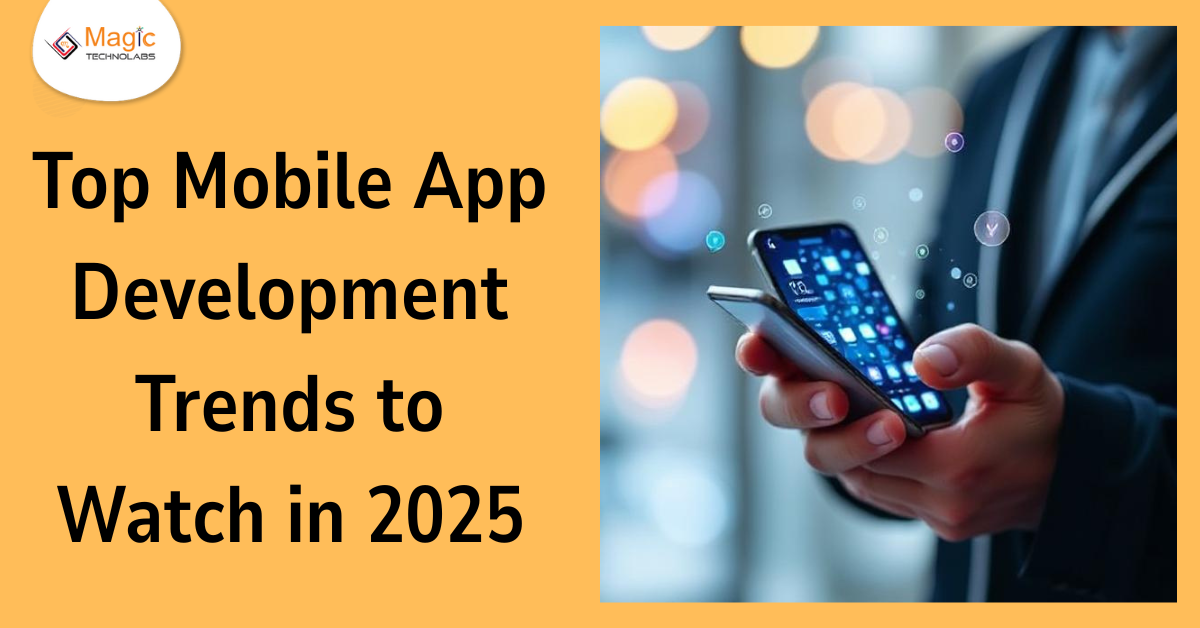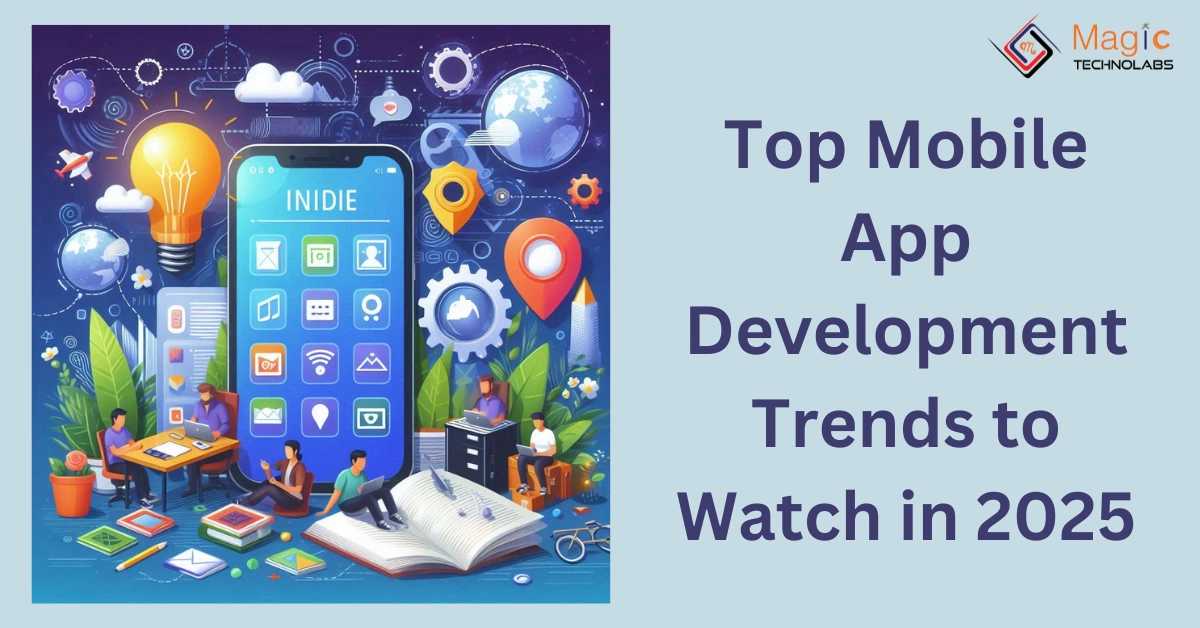The Future of Mobile Apps Is Already Here Introduction When you look at the Twitter logo, what does it represent? A bird powering wings propelled by the wind? As a matter of fact, Twitter simply means to make a sound or scream, but in this case, not literally speaking.
Mobile apps are no longer tools, they are the lifeline to businesses, leisure, health, shopping, learning and communication. By the year 2025, the market of mobile app development is fast-changing with the help of such technologies as AI, 5G, and AR/VR, as well as low-code environments.
No matter whether you are a business owner, founder, or a developer, it is necessary to keep track with these mobile app tendencies to produce something your users will always adore and will absolutely not do without.
Now, we are going to have a look at the most popular trends in mobile app development in 2025 which transform the context of how apps are created, utilized, and monetized.
Blog Outline
1. Growth of AI-Amazed Mobile Apps
2. Boom of Low-Code and No-Code Development
3. App Experiences with 5G Technology
4. Cross-Platform Development Grows in Ground
5. Super Apps: The End-to-End Eco-system
6. Conversational and Voice UI
7. AR/VR at the Use of Everyday Mobile Devices
8. Increased Emphasis on the Security of the Mobile Apps
9. The Green Web Site
10. Last words: Smarter, Future-ready Building
1. Upheaval of AI-Blended Mobile Apps
AI is past the point of being a novelty or a feature, it is becoming the basis. In 2025 mobile apps will become more intelligent, proactive and user-oriented as the mobile apps will do more customized recommendations based on the content people like and have AI-driven chatbots.
Examples of using AI in applications:
Prudent purchasing advice
Projected user action
Customer service Chatbots
Image and voice detectors
Call / Email for Sales Inquiry Today
Unless you app learns as user habits change so, it is likely to get lost.
2. Boom of Low-code and No-code Development
Low-code/no-code has been adopted by startups and SMEs to lessen the time and expense of development. Using these platforms enables quicker launches of MVP and rapid iterations, which means that app development can be an option even to non-developers.
Popular platforms:
FlutterFlow
Adalo
OutSystems
Zoho Creator
Low-code is also making innovation as fast as thinking.
3. 5G-Powered App Experiences
With the release of 5G across the world, apps are now able to provide faster performance, real-time capabilities, and ultra-HD video streaming. More real-time multiplayer games, AR overlays, and buffer-free streaming apps will soon be the market leaders.
Impact areas:
Gaming
Streaming
AR navigation
Cloud gaming
Real-time collaboration tools
4. Cross-Platform Development Gains More Ground
With frameworks such as Flutter, React Native, and Xamarin, developers are now able to build apps that run smoothly on Android, iOS, and even web platforms—cutting costs and accelerating delivery.
Why it matters:
Faster updates
Uniform user experience
Extended audience reach
Cross-platform development is no longer an afterthought—it's a strategy.
5. Super Apps: The One-Stop Ecosystem
WeChat and Gojek paved the way for super apps—apps that provide several services under one umbrella. In 2025, there will be more businesses that create or develop into super app ecosystems.
Typical features included:
Chat
Payments
Shopping
Bookings
Customer support
Convenience is what users adore—super apps provide just that.
6. Voice-Enabled and Conversational UI
Voice assistants and smart devices have popularized voice-enabled apps. Users anticipate searching, commanding, and engaging with apps in natural language.
Voice use scenarios:
Smart home management
Financial services
Medical apps
In-app directions
7. AR/VR in Daily Mobile Usage
Augmented Reality and Virtual Reality are now not limited to gaming alone. In 2025, retail, healthcare, education, and property apps are leveraging AR/VR to enrich experiences.
Examples:
AR placement of furniture
Virtual home tours
VR exercise and meditation
AR-based learning
AR/VR will be a major influencer for user engagement and retention.
8. Increased Emphasis on Mobile App Security
As apps deal with more personal data, security and privacy have topped the list of priorities. Biometric logins, encrypted databases, and secure APIs will be norm in app development.
Security basics:
End-to-end encryption
GDPR & HIPAA compliance
Multi-factor authentication
Threat detection systems
9. Sustainable App Design
As digital sustainability has become a global issue, energy-efficient low-data-use apps are becoming trendsetters. App developers are now developing apps to minimize their carbon footprint.
Tips for sustainable apps:
Optimize code and backend performance
Minimize background data usage
Restrict unwanted animations
Keep storage usage at bay
Sustainable design will draw sustainable users.
Last Thoughts: Build Smarter, Build Future-Ready
2025 is proving to be a revolutionizing year for mobile app building. Whether you're creating a new app or updating an old one, adopting these trends will enable you to provide improved performance, enhanced user interaction, and sustained growth.
The future of mobile isn't only fast and functional—it's smart, inclusive, and immersive.
Start planning your next app with innovation in mind, and you’ll stay ahead of the competition.

















